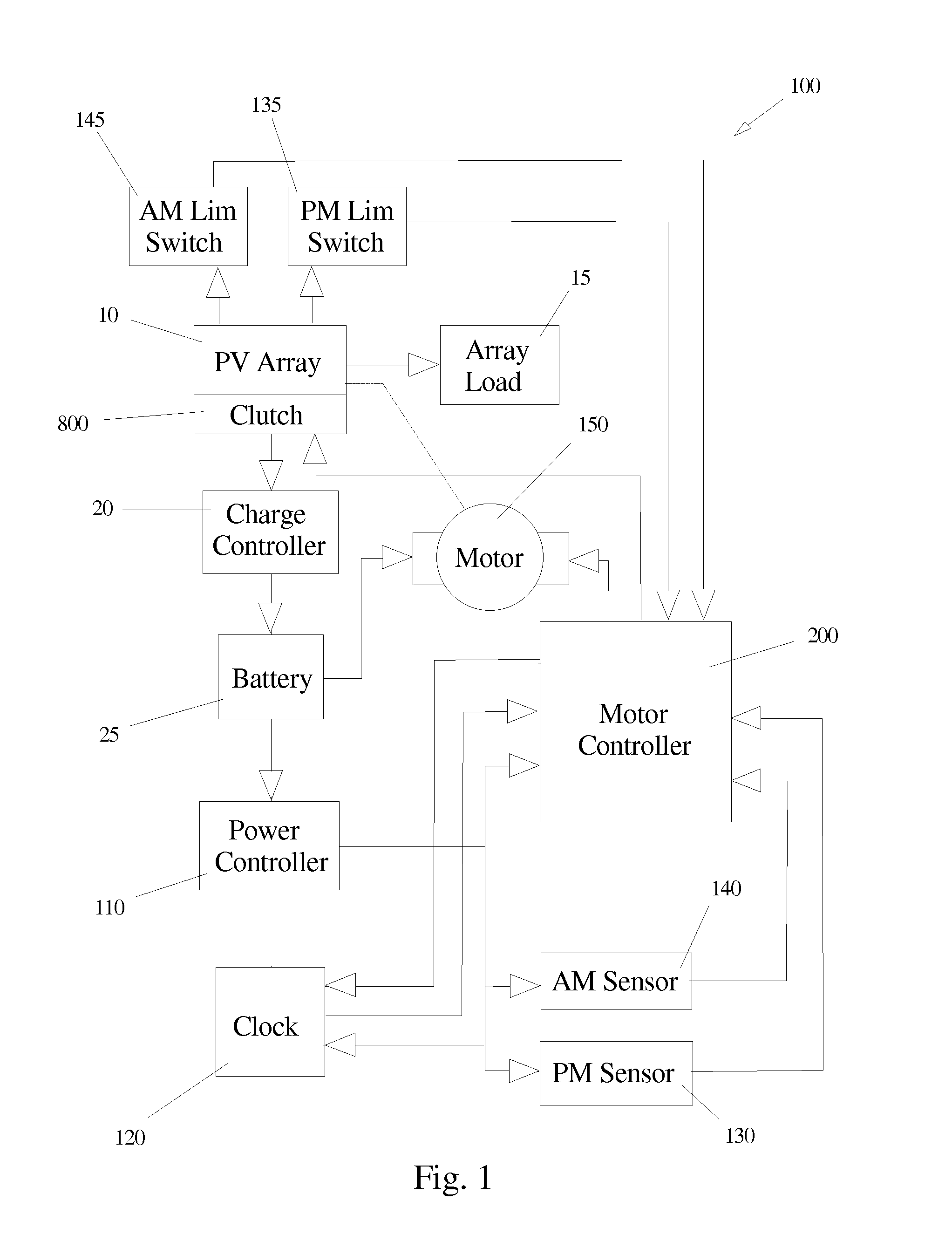Clock Operated Step Function Solar Tracker
a solar tracker and step function technology, applied in the field of clock operated step function solar trackers, can solve the problems of high cost, high cost, and large over-sizing of fixed panel systems, and achieve the effects of reducing cost, good energy capture performance, and superior performan
- Summary
- Abstract
- Description
- Claims
- Application Information
AI Technical Summary
Benefits of technology
Problems solved by technology
Method used
Image
Examples
Embodiment Construction
[0027]The method and apparatus of the present invention form a system for economically optimizing the amount of energy captured from the sun using a solar panel array. Each of the various components of the apparatus will be discussed in detail in following paragraphs; however, a review of FIG. 6 will provide an understanding of the basic architecture of the system.
[0028]Looking briefly at FIG. 6, the apparatus of the present invention is comprised of three major parts: an array of solar panels 10, a coaxial friction clutch assembly 800, and an array boom 950 and counterweight assembly 900. Generally, the solar panel array 10 faces the sun and converts incoming light energy to direct current electrical energy. Coaxial friction clutch assembly 800 serves a number of purposes including acting as a mounting platform for the control electronics and battery as well as providing the wind stabilized pivot point needed for tracking the sun during a typical solar day. The array boom and count...
PUM
 Login to View More
Login to View More Abstract
Description
Claims
Application Information
 Login to View More
Login to View More - R&D
- Intellectual Property
- Life Sciences
- Materials
- Tech Scout
- Unparalleled Data Quality
- Higher Quality Content
- 60% Fewer Hallucinations
Browse by: Latest US Patents, China's latest patents, Technical Efficacy Thesaurus, Application Domain, Technology Topic, Popular Technical Reports.
© 2025 PatSnap. All rights reserved.Legal|Privacy policy|Modern Slavery Act Transparency Statement|Sitemap|About US| Contact US: help@patsnap.com



